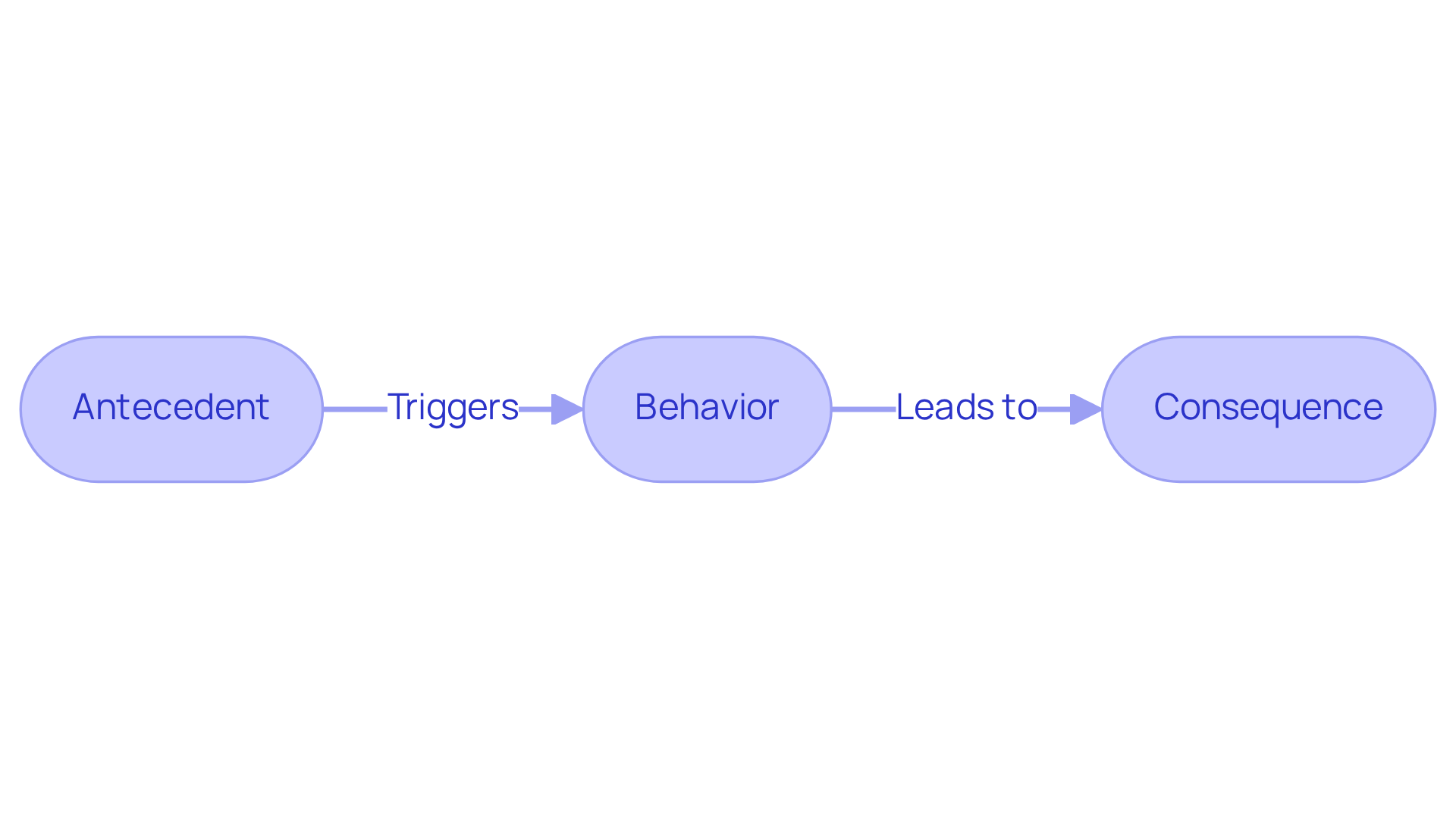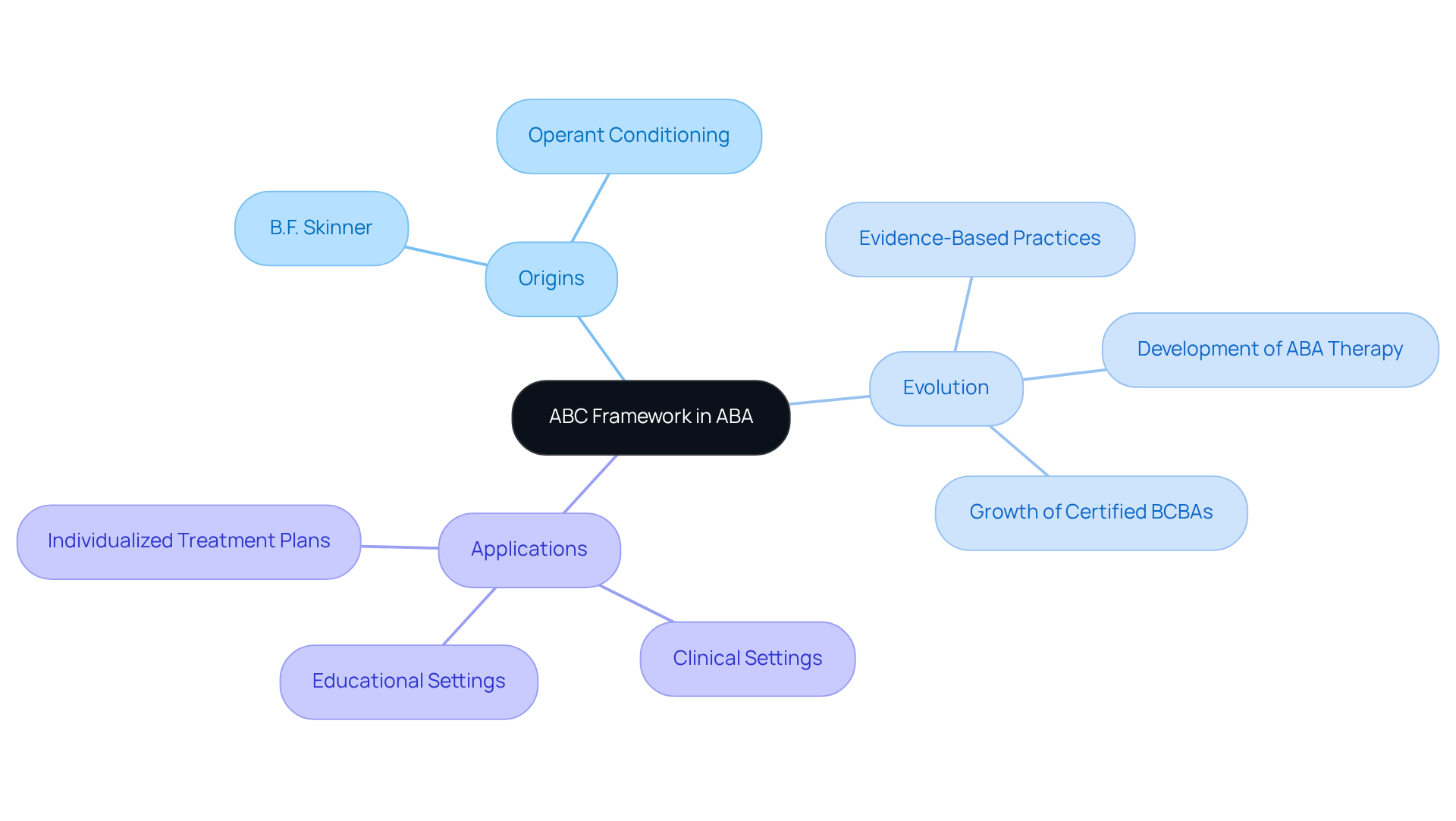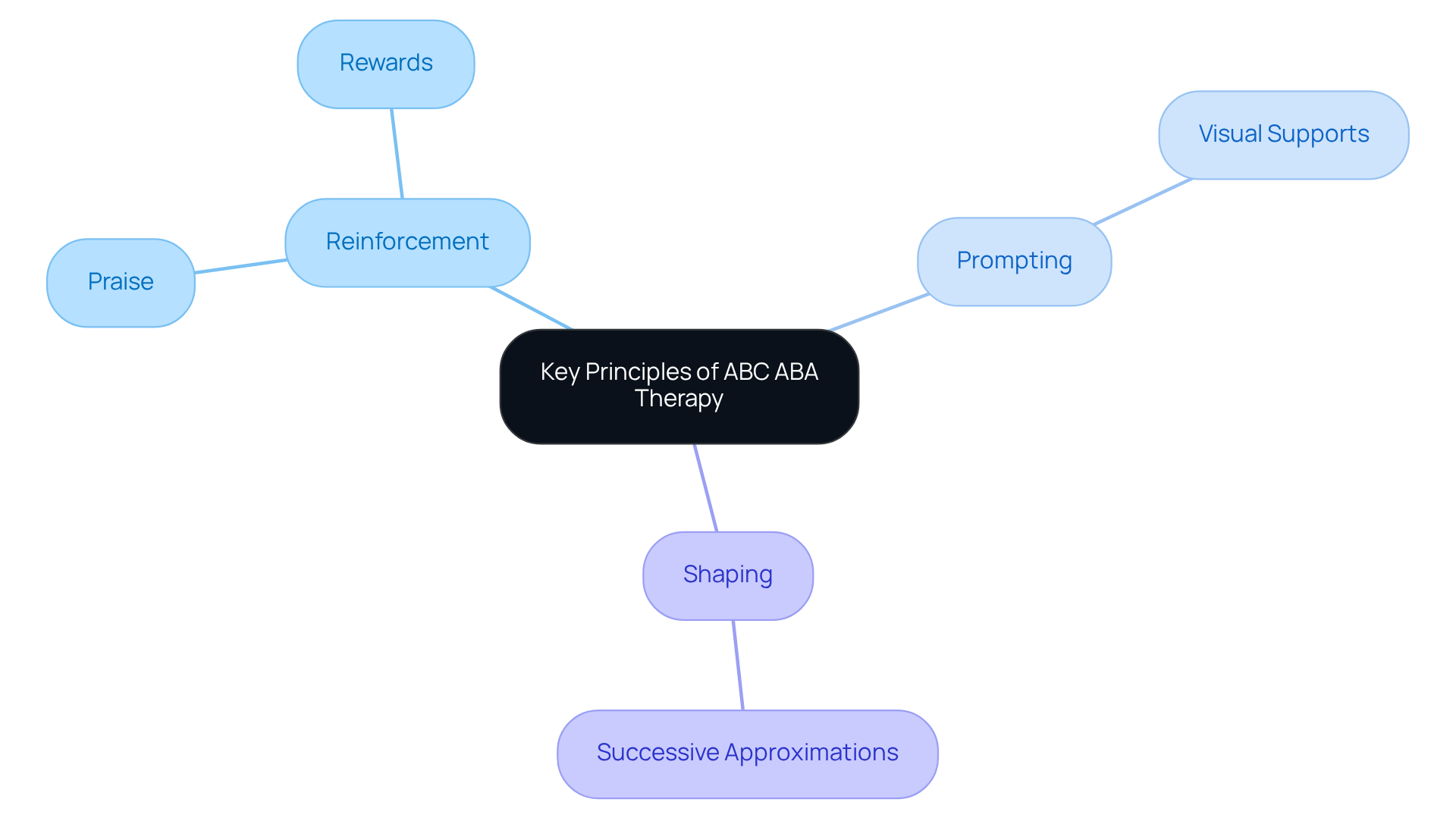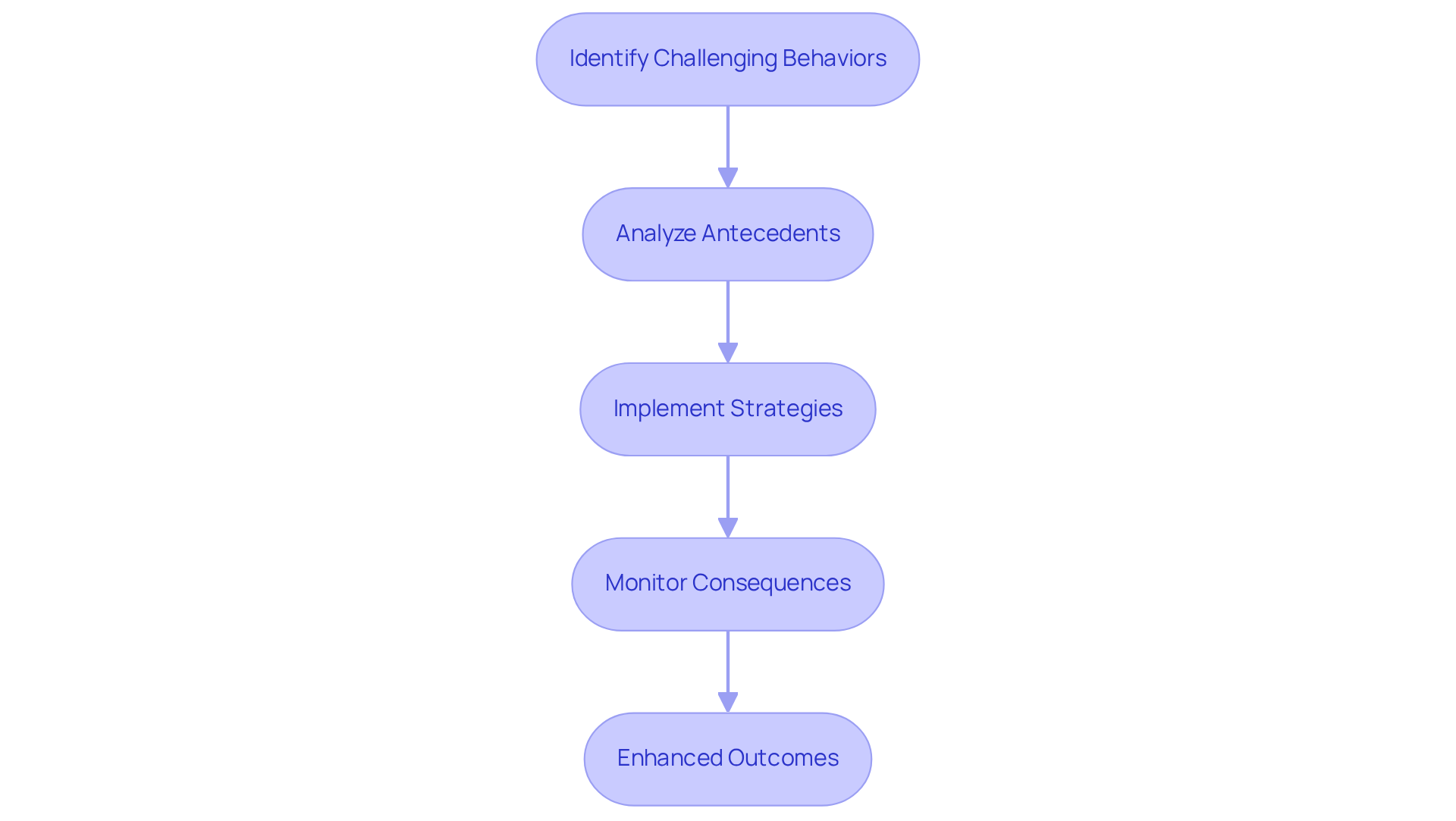September 24, 2025

The ABC ABA model—Antecedent, Behavior, and Consequence—serves as a foundational framework in Applied Behavior Analysis. This model is particularly effective in therapeutic contexts for individuals with autism spectrum disorder. Its origins are rooted in B.F. Skinner's operant conditioning theories, which underscores its importance. By analyzing environmental triggers and reinforcing desired behaviors, the model guides practitioners in developing tailored interventions. This strategic approach not only enhances therapeutic outcomes but also establishes a reliable method for addressing the unique challenges faced by individuals on the spectrum.
The ABC ABA model stands as a pivotal framework in Applied Behavior Analysis, illuminating the ways in which environmental factors influence behaviors. By analyzing the interplay between Antecedent, Behavior, and Consequence, this model not only informs therapeutic practices but also significantly enhances skill acquisition, particularly for individuals with autism spectrum disorder.
As the field of behavior analysis continues to evolve, pressing questions emerge:
The abc aba model in Applied Behavior Analysis (ABA) represents Antecedent, Behavior, and Consequence, establishing a critical framework for understanding the influence of environmental factors on behavior.
This model proves particularly effective in therapeutic settings for individuals with autism spectrum disorder (ASD), where practitioners meticulously observe these abc aba components to develop tailored intervention strategies.
Recent studies reveal that around 80% of analysts utilize the abc aba model in their practice, highlighting its importance in behavior modification.
Consider a classroom scenario: a teacher's verbal cue, such as 'It's time to clean up,' serves as a precursor that encourages students to engage in the desired action of tidying up. Additionally, various discriminative stimuli, including visual cues and physical gestures, play a crucial role in signaling expected actions.
This structured approach not only clarifies behavioral expectations but also promotes and generalization across diverse contexts, ultimately enhancing the confidence and independence of individuals undergoing ABA therapy.

The ABC framework is fundamentally anchored in the pioneering work of B.F. Skinner, a prominent figure in psychology renowned for his groundbreaking research in operant conditioning during the mid-20th century. Skinner's theories underscored the critical role of reinforcement in shaping behavior, laying the foundation for the ABC framework—Antecedent, Behavior, and Consequence.
This approach has significantly evolved over the years, becoming a cornerstone in , particularly in the treatment of autism. Its straightforward nature and demonstrated effectiveness have made it a preferred method among analysts, enabling systematic observation and data collection that inform intervention strategies.
As ABA therapy has gained widespread recognition as an evidence-based practice, the ABC model continues to function as an essential tool in both clinical and educational settings, ensuring that interventions are specifically tailored to meet the unique needs of individuals with autism.

The key principles of [abc aba therapy](https://hireaba.today)—reinforcement, prompting, and shaping—are fundamental for fostering positive behavioral changes. Reinforcement involves providing a consequence that increases the likelihood of a preferred action being repeated. For example, when a child effectively expresses their needs, prompt praise or rewards can strengthen this behavior, enhancing the chances of repetition in the future. Research indicates that is a core technique in ABA therapy, offering immediate praise or rewards to promote desired actions in children with autism.
Prompting serves as a cue or hint to encourage specific actions, such as utilizing visual supports to assist a child in completing a task. Systematic prompting has demonstrated an improvement in social initiation skills by an average of 67% across various studies. On the other hand, shaping involves gradually guiding a person toward preferred conduct through successive approximations, allowing for incremental progress. For instance, a therapist might initially reinforce any attempt at communication and then progressively require more specific forms of communication as the child develops their skills.
Ongoing assessment and data collection are crucial for informing treatment decisions in ABA therapy, ensuring that interventions remain effective and tailored to individual needs. Collectively, these principles create a robust framework within the abc aba approach, enabling analysts to develop customized interventions that effectively facilitate skill acquisition and enhance the overall quality of life for individuals undergoing abc aba therapy.

The is extensively utilized across various therapeutic settings, particularly in supporting children diagnosed with autism. Therapists often utilize this model to analyze challenging behaviors such as tantrums or non-compliance. By pinpointing the antecedents that trigger these behaviors, they can implement strategies to modify the environment or provide appropriate prompts. Furthermore, the consequences of these behaviors are meticulously monitored to guarantee that positive actions are reinforced, ultimately leading to enhanced outcomes.
Educational institutions and clinics frequently adopt the abc aba model to create individualized education plans (IEPs) that target specific behavioral objectives, ensuring that interventions are effective and customized to meet each child's distinct needs.

The ABC ABA framework stands as a foundational model in Applied Behavior Analysis, illustrating the intricate interplay of antecedents, behaviors, and consequences in shaping actions. This structured approach not only aids in understanding behavioral dynamics but also plays a pivotal role in developing effective interventions, particularly for individuals with autism spectrum disorder. By dissecting the components of behavior, practitioners can create tailored strategies that foster skill acquisition and enhance the overall quality of life for those they support.
Key insights from this article highlight the historical roots of the ABC model in B.F. Skinner's work, its evolution into a cornerstone of ABA therapy, and the core principles driving its effectiveness. Reinforcement, prompting, and shaping are essential techniques that enable behavior analysts to encourage positive changes through systematic observation and data collection. The model's application across various therapeutic settings underscores its versatility and importance in addressing specific behavioral challenges faced by individuals with autism.
Ultimately, understanding the ABC ABA framework is crucial for anyone involved in behavior analysis or therapeutic practices. It emphasizes the significance of a structured approach to behavior modification, advocating for tailored interventions that meet individual needs. Engaging with these principles not only enhances therapeutic outcomes but also empowers practitioners to make informed decisions that can significantly improve the lives of those they serve.
What does the ABC ABA model stand for in Applied Behavior Analysis?
The ABC ABA model stands for Antecedent, Behavior, and Consequence, which are core components that help understand how environmental factors influence behavior.
What is meant by 'Antecedent' in the ABC ABA model?
'Antecedent' refers to the stimuli or events that occur before an action or behavior takes place.
How is 'Behavior' defined in the ABC ABA model?
'Behavior' denotes the action or response that is being observed or measured in the context of the model.
What does 'Consequence' mean in the ABC ABA framework?
'Consequence' is the outcome that follows the behavior, which can either reinforce the behavior, encouraging it to happen again, or discourage it, making it less likely to occur in the future.
How is the ABC ABA model used in therapeutic settings?
The ABC ABA model is particularly effective in therapeutic settings for individuals with autism spectrum disorder (ASD), where practitioners observe these components to create tailored intervention strategies.
What percentage of analysts utilize the ABC ABA model in their practice?
Recent studies indicate that around 80% of analysts use the ABC ABA model in their behavior modification practices.
Can you provide an example of the ABC ABA model in action?
In a classroom scenario, a teacher's verbal cue like 'It's time to clean up' serves as an antecedent that encourages students to engage in the behavior of tidying up.
What role do discriminative stimuli play in the ABC ABA model?
Discriminative stimuli, such as visual cues and physical gestures, signal expected actions and are crucial in guiding behavior within the ABC ABA framework.
What benefits does the structured approach of the ABC ABA model provide?
This structured approach clarifies behavioral expectations, promotes skill acquisition, and aids in generalization across different contexts, ultimately enhancing the confidence and independence of individuals undergoing ABA therapy.
Our expert recruitment strategies and AI-driven sourcing ensure that you receive top-notch candidates quickly, without compromising on quality. Whether you’re looking for BCBAs, Clinical Directors, or RBTs, we’ve got you covered.